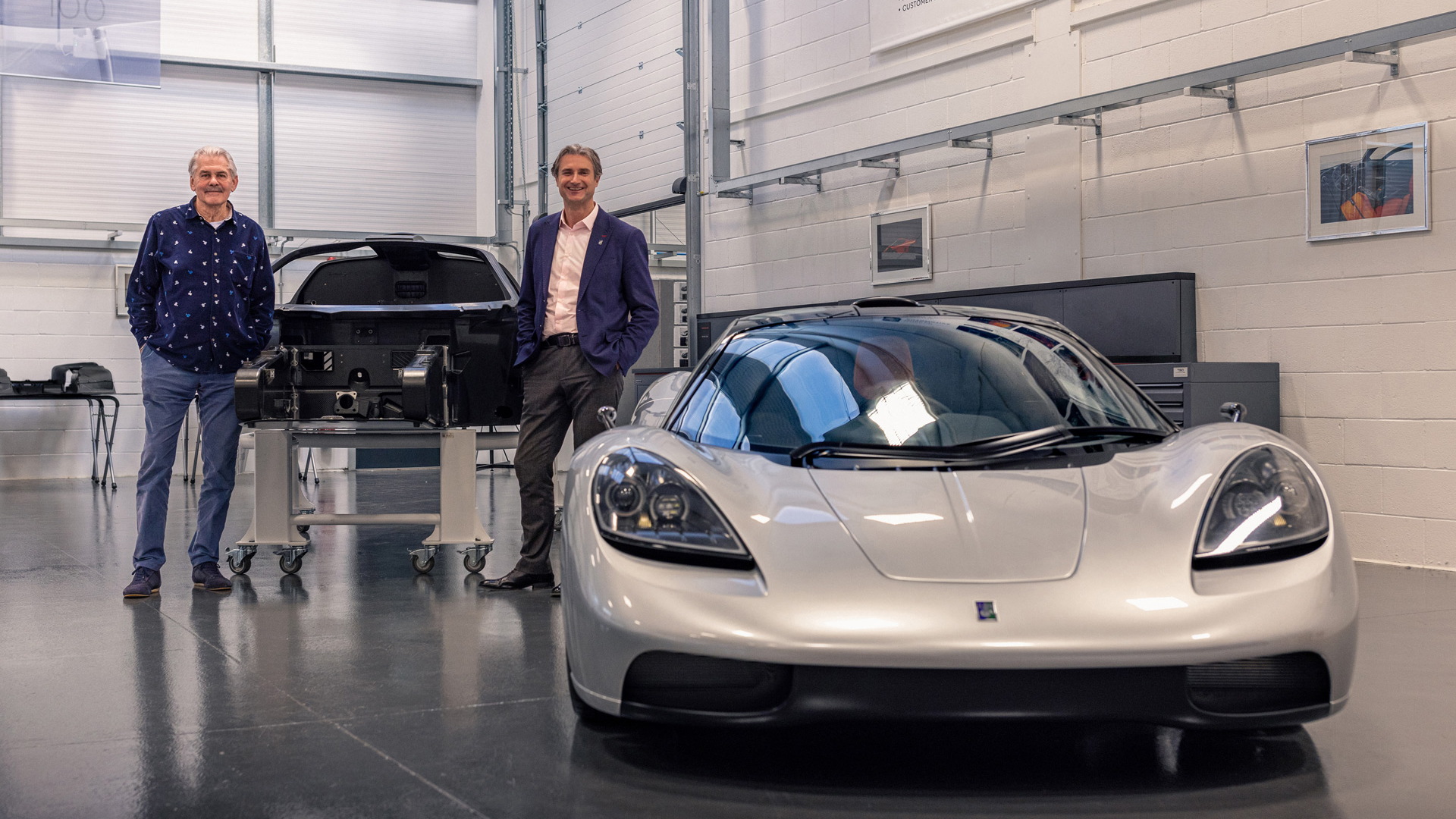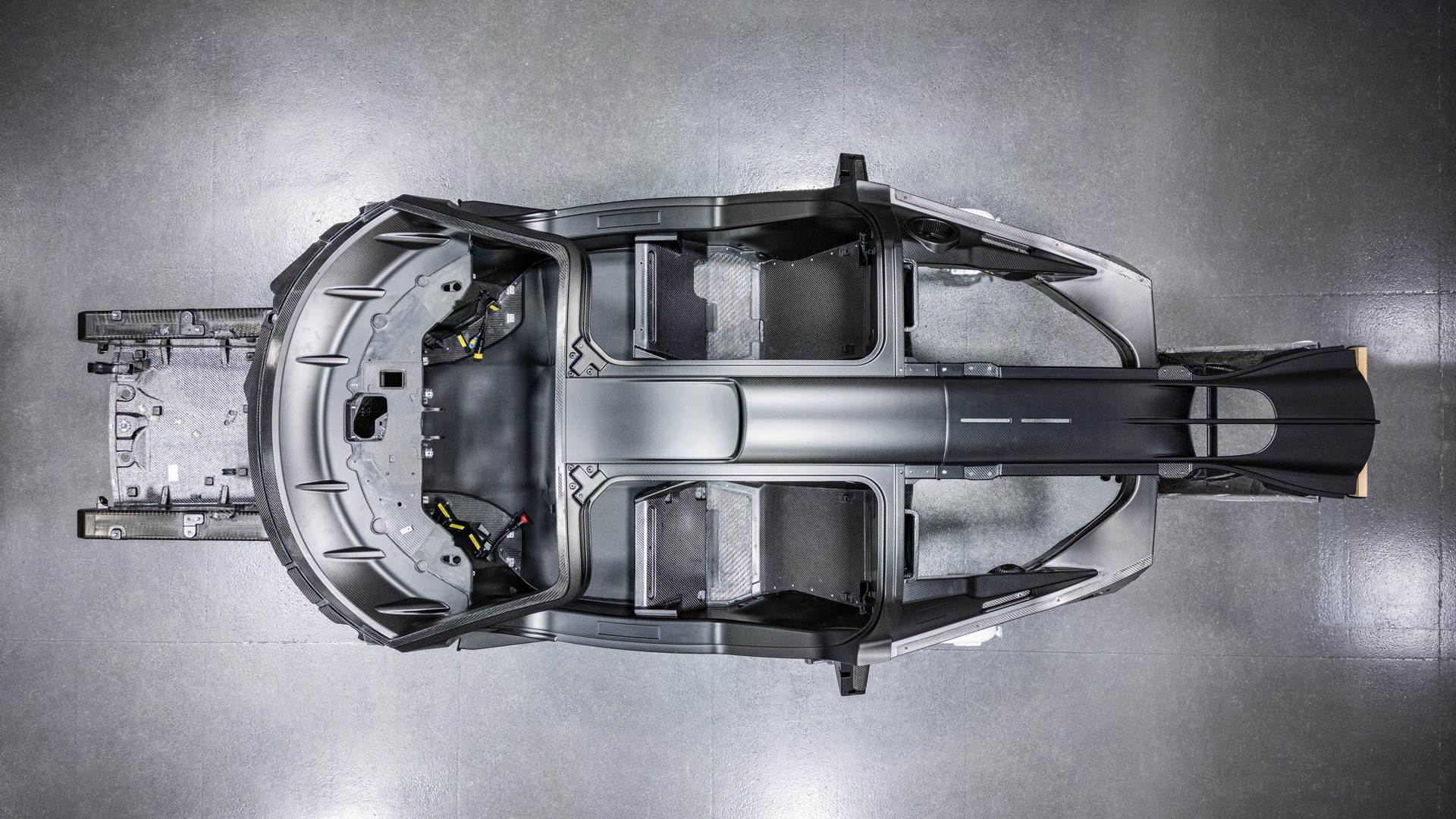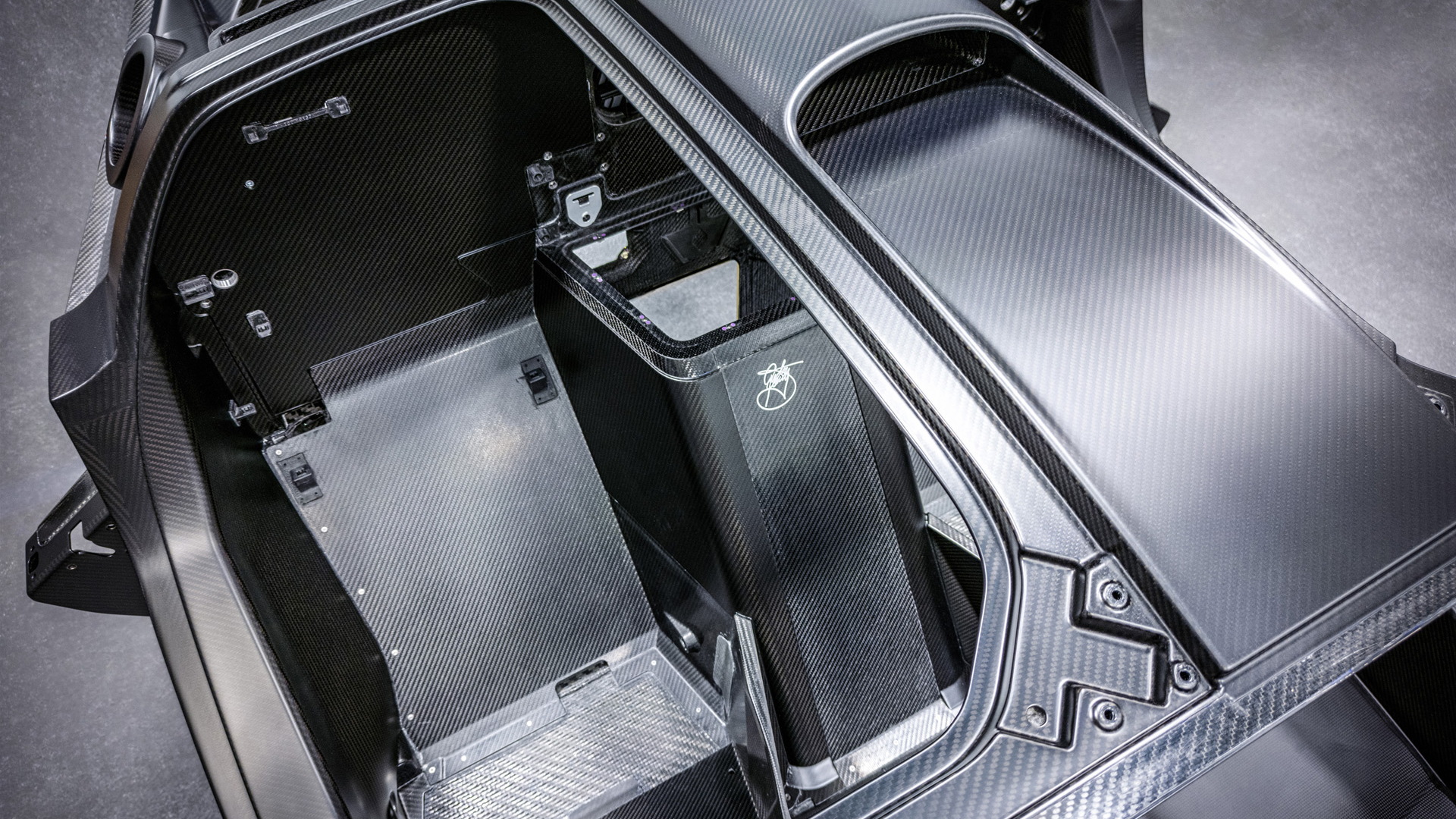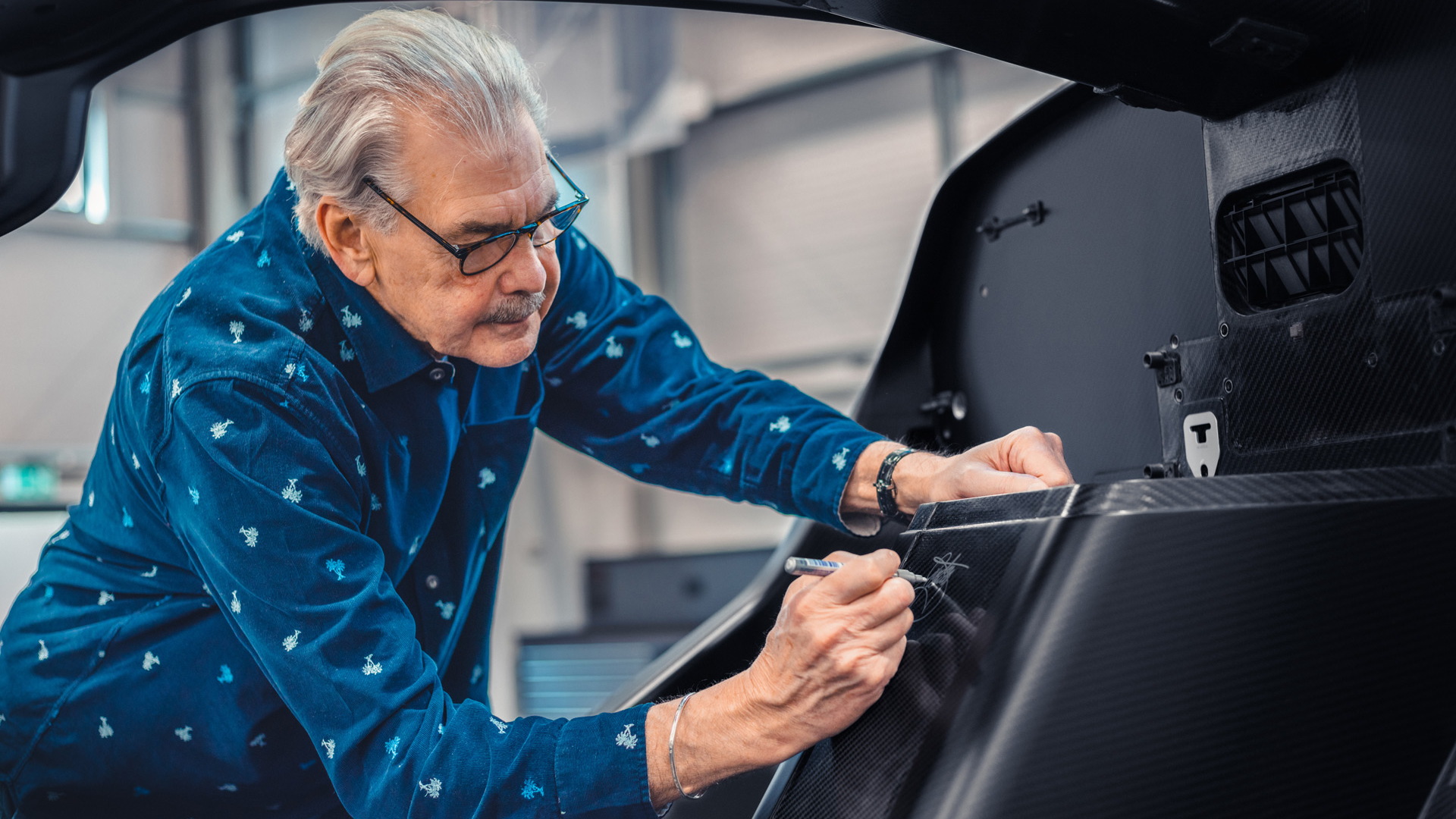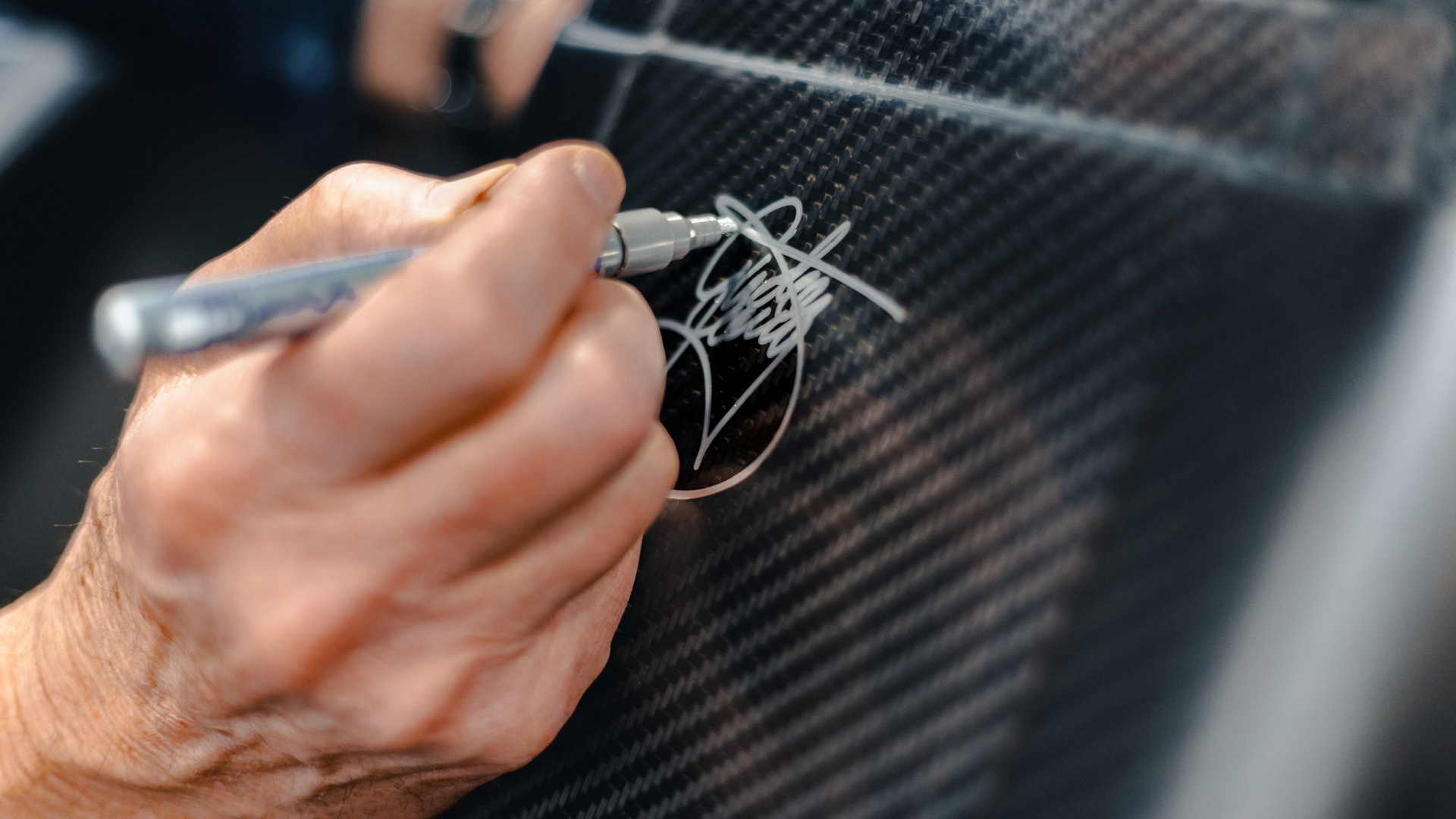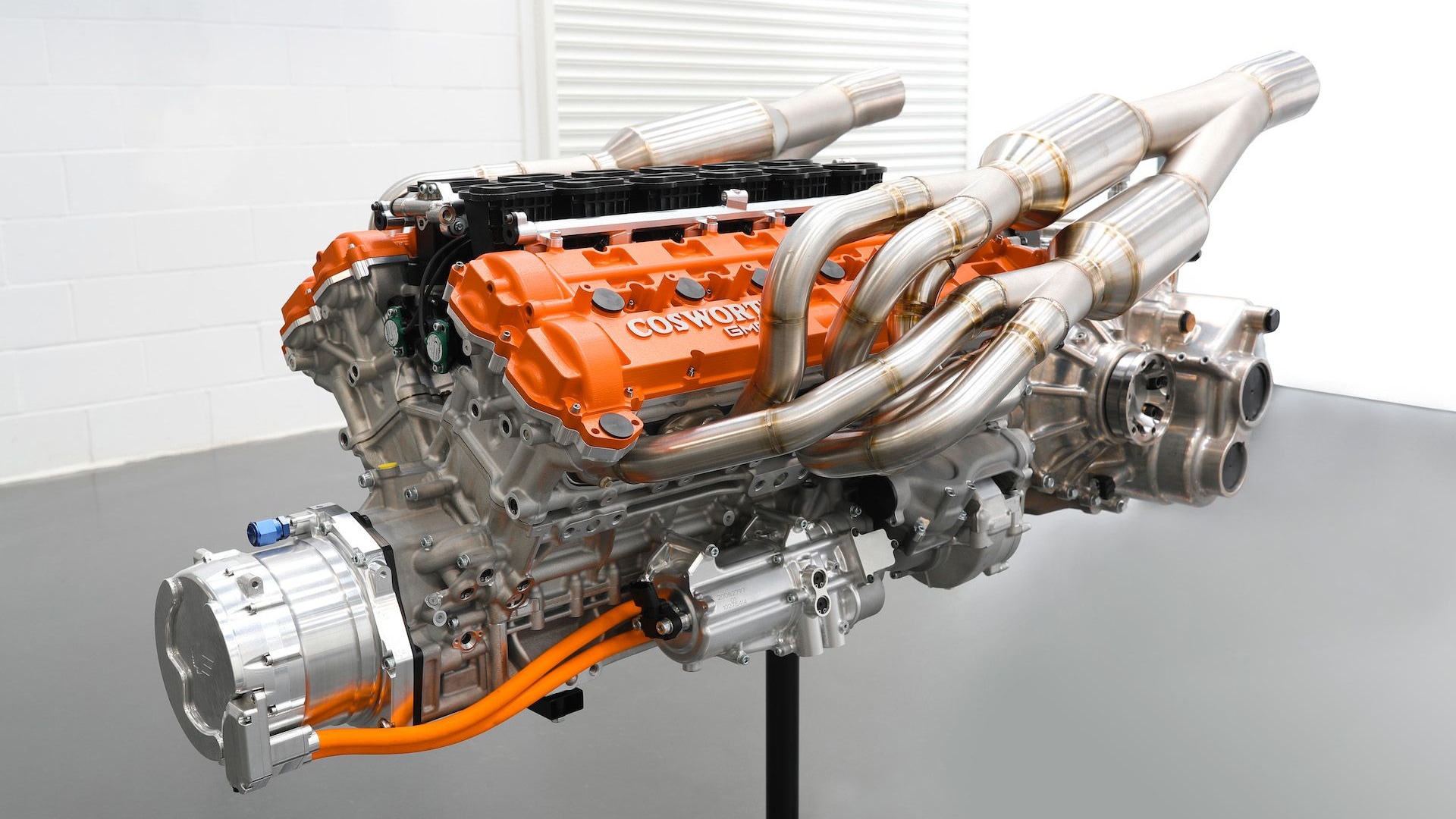Gordon Murray Automotive's first product, the T.50 supercar, is now in production, roughly two and half years after it was first shown.
Production is handled at GMA's facility in Dunsfold, U.K., close to Dunsfold Aerodrome, the site of the "Top Gear" Test Track.
Just 100 examples will be built, together with 25 examples of the track-focused T.50s Niki Lauda, and all build slots for both cars are gone. GMA has already revealed a follow-up in the form of the T.33 supercar, and all 100 build slots for that car are also gone.
To mark the start of production of the T.50, Gordon Murray, the car's designer and the founder of GMA's Gordon Murray Group parent company, signed the carbon-fiber monocoque chassis used for the first build. Also present was Gordon Murray Group CEO Phillip Lee.
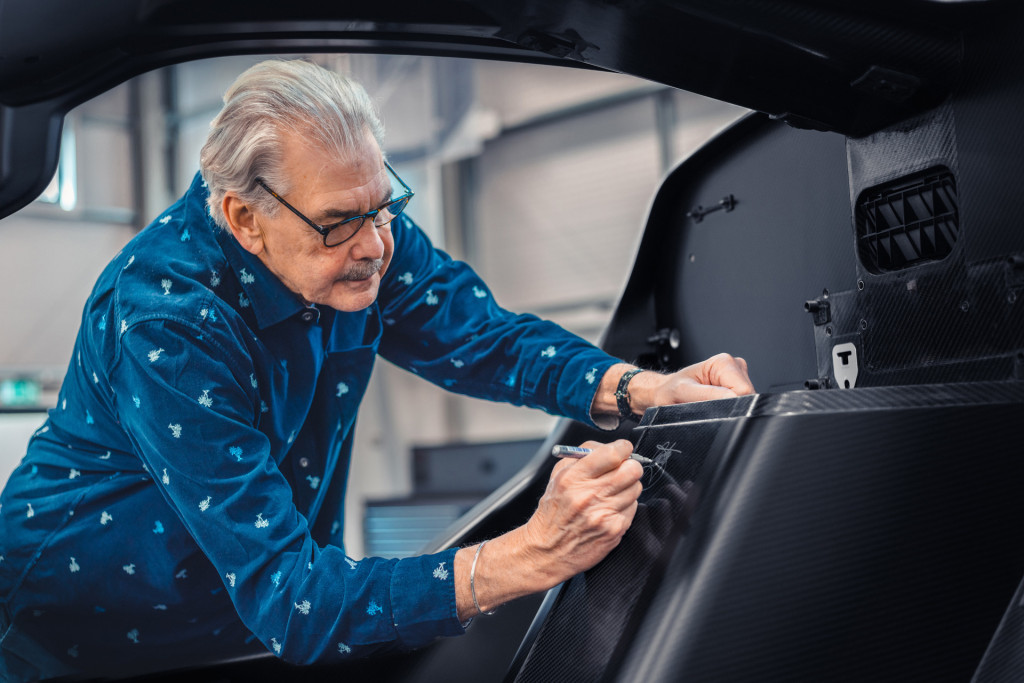
GMA T.50 starts production
“Designing and engineering the T.50 has been an incredible journey with much of the initial work completed during lockdown, so to witness the engineering art of the first customer car’s carbon-fiber monocoque ready for assembly, less than two-and-a-half years since reveal, is quite magical,” Murray said in a statement.
That monocoque was key in getting the curb weight of the T.50 down to a claimed 2,174 pounds, or around two-thirds the weight of rival supercars. That's impressive as the T.50 seats three (with the driver in the center) and still has some space for some luggage, despite the footprint of the car also being similar to that of a Porsche 718.

GMA T.50 Cosworth V-12 engine
Power in the car comes from a Cosworth-developed 3.9-liter V-12 that boasts a 12,100-rpm redline, claimed by GMA to be the highest redline of any production car. Working with a 48-volt mild-hybrid system, peak output is 654 hp and 344 lb-ft of torque. Those numbers aren't world-beating for a supercar these days, but GMA's mission was to deliver the ultimate driving experience, as opposed to headline numbers.
To support its customers, GMA will create service centers and smaller service support centers around the globe. Five of the service centers are already established; they are located in the U.K., Japan, Abu Dhabi, and the U.S. (one each on the East and West coasts). The service support centers are planned for Australia, Bahrain, China, Germany, Singapore, Spain, and Saudi Arabia, as well as six U.S. states.
